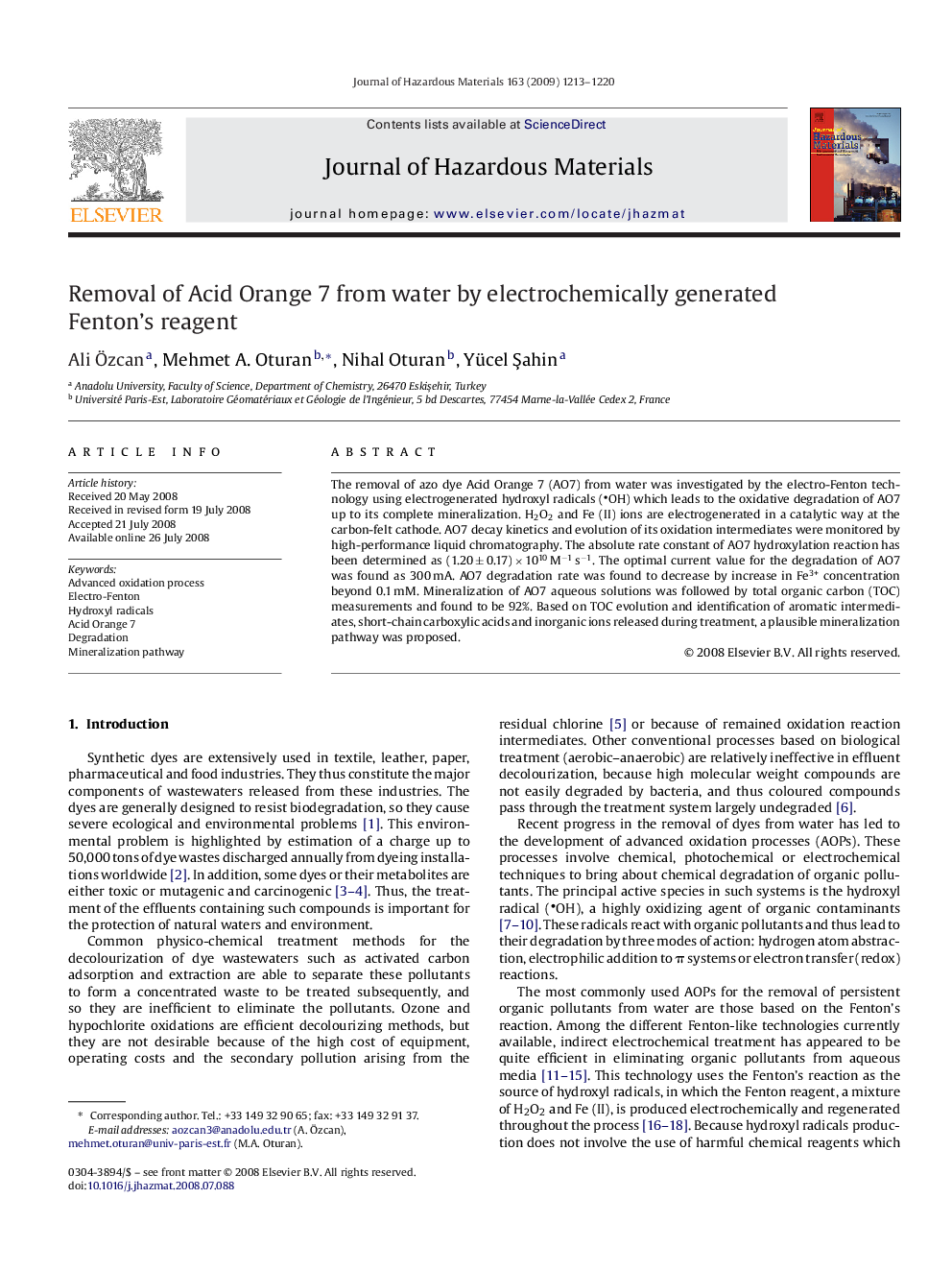| Article ID | Journal | Published Year | Pages | File Type |
|---|---|---|---|---|
| 582182 | Journal of Hazardous Materials | 2009 | 8 Pages |
Abstract
The removal of azo dye Acid Orange 7 (AO7) from water was investigated by the electro-Fenton technology using electrogenerated hydroxyl radicals (OH) which leads to the oxidative degradation of AO7 up to its complete mineralization. H2O2 and Fe (II) ions are electrogenerated in a catalytic way at the carbon-felt cathode. AO7 decay kinetics and evolution of its oxidation intermediates were monitored by high-performance liquid chromatography. The absolute rate constant of AO7 hydroxylation reaction has been determined as (1.20 ± 0.17) Ã 1010 Mâ1 sâ1. The optimal current value for the degradation of AO7 was found as 300 mA. AO7 degradation rate was found to decrease by increase in Fe3+ concentration beyond 0.1 mM. Mineralization of AO7 aqueous solutions was followed by total organic carbon (TOC) measurements and found to be 92%. Based on TOC evolution and identification of aromatic intermediates, short-chain carboxylic acids and inorganic ions released during treatment, a plausible mineralization pathway was proposed.
Keywords
Related Topics
Physical Sciences and Engineering
Chemical Engineering
Chemical Health and Safety
Authors
Ali Ãzcan, Mehmet A. Oturan, Nihal Oturan, Yücel Åahin,
